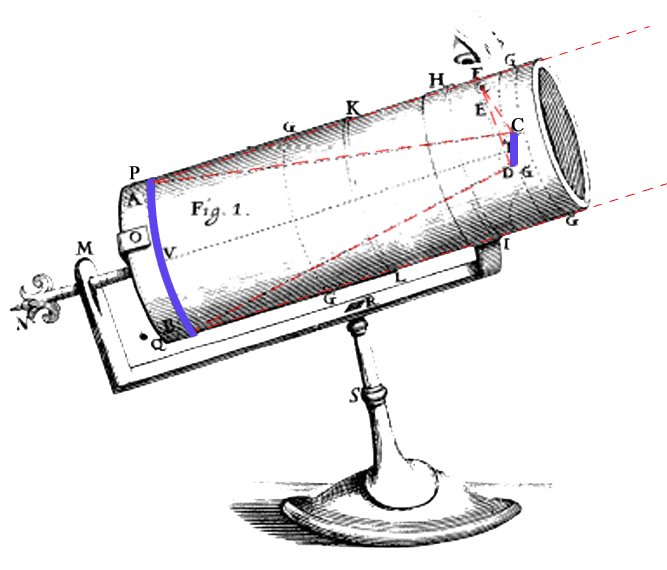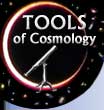| At
the left is a curved mirror AB, which brings light coming in from
the right from some distant object to a focus(the mirror’s
focal length is the distance to the focus). Along the way the light
is intercepted by a small flat mirror CD and sent off to the side
so the focus, where the image of the distant object is formed, is
at E. A small lens at F is used as an eyepiece to magnify the image
for the observer’s eye. The basic arrangement resembles the
Keplerian telescope (see this diagram)
except with a curved metal mirror instead of the glass objective
lens. |
 |


